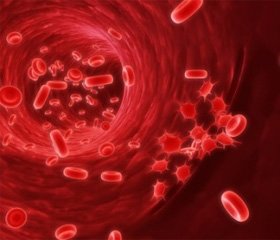Международный эндокринологический журнал 5 (45) 2012
Вернуться к номеру
High HbA1C levels correlate with reduced plaque regression during statin treatment in patients with stable coronary artery disease
Авторы: Daida H., Takayama T., Hiro T., Yamagishi M. et al.
Рубрики: Эндокринология
Разделы: Справочник специалиста
Версия для печати
High HbA1c levels correlate with reduced plaque regression during statin
treatment in patients with stable coronary artery disease:
Results of the coronary atherosclerosis study measuring effects
of rosuvastatin using intravascular ultrasound in Japanese subjects (COSMOS)
Background. The incidence of cardiac events is higher in patients with diabetes than in people without diabetes. The Coronary Atherosclerosis Study Measuring Effects of Rosuvastatin Using Intravascular Ultrasound in Japanese Subjects (COSMOS) demonstrated significant plaque regression in Japanese patients with chronic coronary disease after 76 weeks of rosuvastatin (2.5 mg once daily, up-titrated to a maximum of 20 mg/day to achieve LDL cholesterol < 80 mg/dl).
Methods. In this subanalysis of COSMOS, we examined the association between HbA1c and plaque regression in 40 patients with HbA1c (greater than or equal to) 6.5 % (high group) and 86 patients with HbA1c < 6.5 % (low group).
Results. In multivariate analyses, HbA1c and plaque volume at baseline were major determinants of plaque regression. LDL cholesterol decreased by 37 and 39 % in the high and low groups, respectively, while HDL cholesterol increased by 16 and 22 %, respectively. The reduction in plaque volume was significantly (p = 0.04) greater in the low group (from 71.0 ± 39.9 to 64.7 ± 34.7 mm3) than in the high group (from 74.3 ± 34.2 to 71.4 ± ± 32.3 mm3). Vessel volume increased in the high group but not in the low group (change from baseline: +4.2 % vs –0.8 %, p = 0.02). Change in plaque volume was significantly correlated with baseline HbA1c.
Conclusions. Despite similar improvements in lipid levels, plaque regression was less pronounced in patients with high HbA1c levels compared with those with low levels. Tight glucose control during statin therapy may enhance plaque regression in patients with stable coronary disease.
Cardiovascular Diabetology. — July 2012

